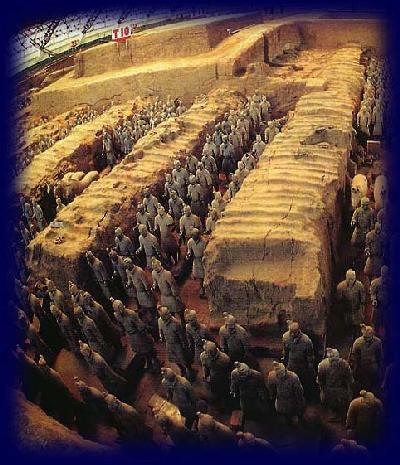| About China > History > Dynasties > dycontent |
|
|
Qin Dynasty
The Qin made many changes in their efforts to unify China and aid in administrative tasks. First, the Qin implemented a legalist form of government under which the former Qin territory was governed. The area was divided into 36 commanderies which were then subdivided into counties. The commanderies had a civil governor, a military commander and an imperial inspector who had to report to the Emperor in writing. The legalist form of government involved rewards and punishments to maintain order. Also, the state had absolute control over its people and the former nobility lost all of its power. The nobility was also transferred from their homes to the capital. Groups of five to 10 family units were formed which were held responsible for the wrongdoings of any individual within the group.
Despite all of these accomplishments, the Qin Emperor was not a popular leader. The public works and taxes were too great a burden for the population. It seemed the emperor could not be satisfied. Also, the nobility disliked him because they were deprived of all of their power and relocated. Finally, the emperor banned all books that advocated forms of government other than the current one. The writings of the great philosophers of the One Hundred Schools period were burned and more than 400 opponents were executed.
The Qin reign came to an end shortly after the First Emperor's death. The Qin Emperor Shihuang only ruled for 37 years; he died suddenly in 210BC. His son took the throne as the Second Emperor, but was quickly overthrown, and the Han dynasty began in 206BC. |
||||||
 |

